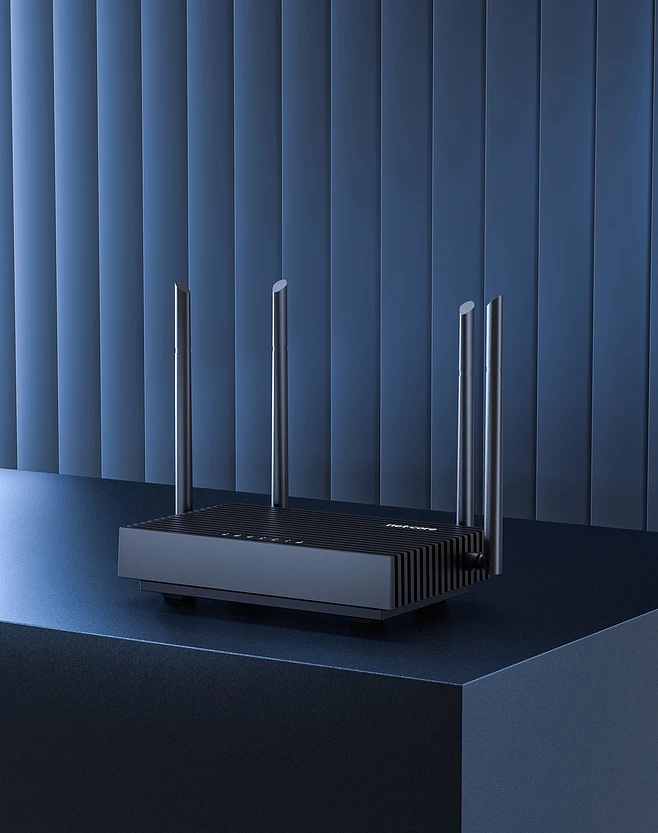In terms of property
Industrial 4G routers can be divided into linear routers and nonlinear routers in terms of performance.
Linear routers can transmit smoothly based on the bandwidth of the transmission medium without interruption or delay, and their calculation method is the same as the linear backplane bandwidth of the switch. Linear routers are high-end routers with high port bandwidth and strong data transmission capabilities, capable of transmitting data packets at media rates.
4G Outdoor CPE Nonlinear routers belong to mid to low end routers, but some new broadband routers also have linear transmission capabilities. The properties of routers are mainly influenced by CPU properties. If the CPU attribute is relatively high, 4G industrial routers are more likely to be high-end linear routers.
Wifi 5 Wireless Router 
Usually, speed is not a measure of routers, but data capacity is a reference for measuring the maximum capacity of routers to receive and send data. When the backplane capacity of an industrial 4G router is greater than 40Gbps, the router is a high-end router; Between 25Gbps and 40Gbps, the router is a mid-range router; Below 25Gbps, it belongs to low-end routers. The criteria for classification are not absolute, and specific parameters need to be divided based on the parameters of different plants.
WiFi 6 Wireless Router About Structure
Structurally, industrial 4G routers can be divided into modular routers and non modular routers.
Modular routers generally only have the basic functions of routing, and their interface types and some extended functions need to be configured according to the actual needs of users. Users can choose the corresponding module based on the type of network they are accessing. Different modules can provide different connectivity and management capabilities. For example, most modular routers allow users to choose network interfaces, VPNs, firewalls, etc., and these routers are mostly modular routers.
Non modular routers are basically low-end routers used in private settings. They are mainly used by families or small companies within ISPs. They support SLIP, PPP, PPYP and IPSec virtual private network protocols. If these protocols are run on ports such as ADSL to increase the available bandwidth of the home, it will increase the burden on the access router. In the future, the ports of such routers will run multiple protocols while avoiding telephone switching networks.
In terms of functionality
Industrial 4G routers can be divided into general routers and specialized routers according to their functions. A common private router is a universal router, which can meet the general usage needs without any additional special requirements for application scenarios.
For dedicated routers, they can perform certain functions and optimize routing interfaces and hardware specifically. Taking a foreign trade dedicated router as an example, it is very convenient to quickly access some foreign trade websites by changing the local IP address.
On the interface
Industrial 4G routers support SDH STM-1 interface, SDH STM-4 interface, and SDH STM-4 interface. At present, high-end industrial 4G routers can use the SDH STM-64 interface, while others are relatively poor. STM-1 has optical and electrical interfaces. STM-1 electrical interface is suitable for office areas with weak interference signals, while STM-4, STM-16, and STM-64 all use optical interfaces.
On objects
Industrial 4G routers can be divided into core routers (core level), distributed routers (company level), and access routers (family level) according to their usage objects.
The core router is a computer that sends packets to the network (not between networks) and is a key device connecting the Internet and other layers of routers. It is usually used by communication operators or ISPs. The core router has a large capacity and requires high speed and reliability. In order to achieve high reliability, network systems tend to adopt traditional redundancy technologies such as hot backup, dual power supplies, and dual data links to ensure the reliability of backbone routers.
Distributed routers can be applied to connect multiple logically distributed networks. Because it requires connecting many objects, its system is simple and data flow is small. In addition to connecting different networks, it is also necessary to choose a smooth and short path to improve communication speed, reduce the burden on the communication network, save system resources, enhance system flexibility, and thus play the role of the network system. To the maximum extent possible.

Access routers are mainly used for network connections in small local area networks, and are commonly used in small areas such as homes, small businesses, or internet cafes where the network environment is simple.




